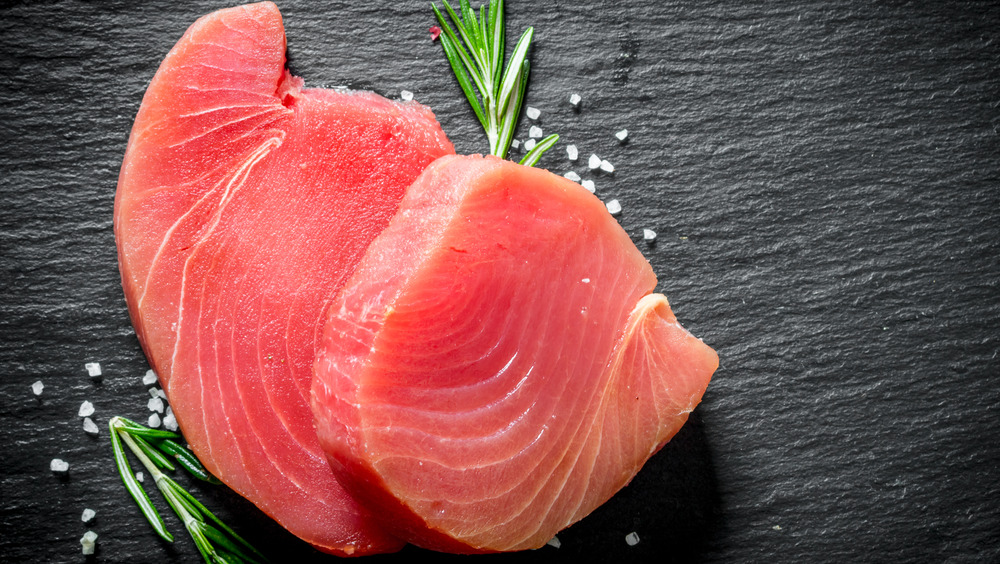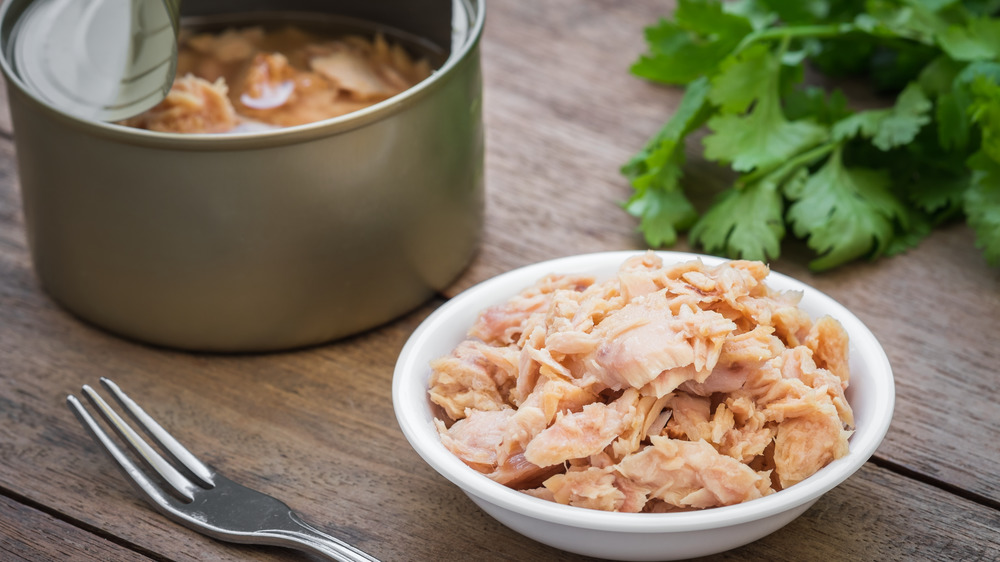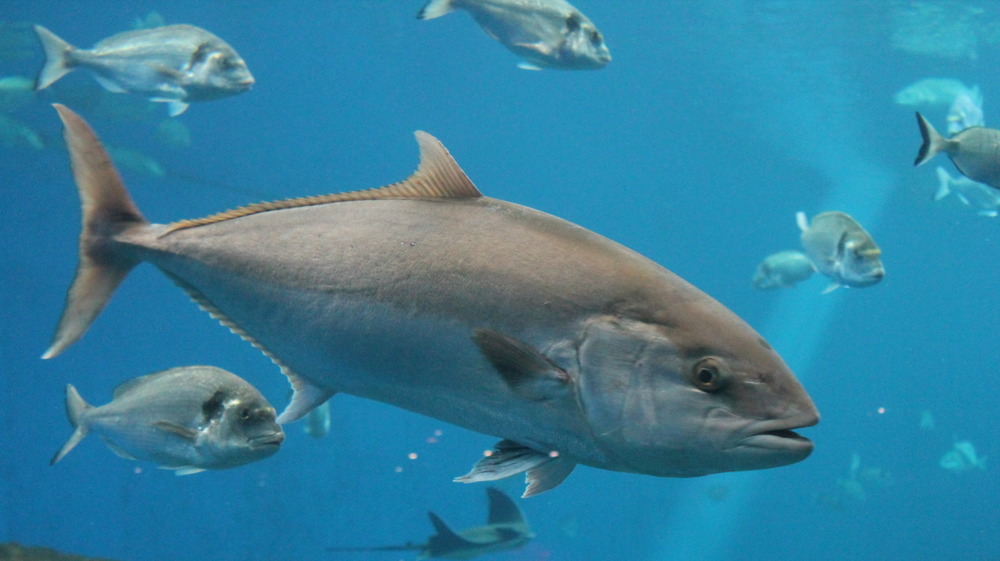What You Should Know About The Tuna Diet
Crash diets are nothing new. The pressure to lose weight and keep it off has been around for decades. There is, however, a new twist to modern crash diets. They emphasize hard numbers or focus on 'breaking bad habits' instead of fast results. Some diets, like the Tuna Diet, use both tactics.
Created by bodybuilder Dave Draper, the Tuna Diet is a three-day diet where you can only eat tuna, take your vitamins, and drink water (2.4 liters to be specific). After three days, Draper says that you can bring in low fat cottage cheese, plain salad, steamed vegetables, and plain chicken to supplement your menu. It's a fast drop to the "doorstep of the ketogenic diet," according to Draper's website.
And that is very true. The high protein, high fat, low carb diet will push your body into ketosis. But the Tuna Diet also carries a fair amount of risk, only some of which is reduced by the use of vitamins and branch chain amino acids as recommended by Draper.
It's a harsh diet and not easy to follow, which even Draper admits. Even if someone follows through with the diet, there is also concern that low calorie and restrictive diets don't actually help long term weight loss, as reported by the National Institute of Health. Even then, there is a bigger issue with the Tuna Diet. And that issue is mercury poisoning.
How much tuna you actually need
Draper's diet requires you to eat "1 to 1.5 grams of protein per pound of body weight in six equal servings throughout the day." For a 200 pound person, this comes out to between 200 and 300 grams of protein a day. And if that sounds like a lot, it is. Harvard Medical School states that the normal ratio of protein to body fat is .35 grams per pound of fat, so a 200-pound person should eat around 70 grams of protein a day, two to four times less than required by the tuna diet.
If you get all your protein from tuna, your daily intake will be about 4.5 servings since canned tuna has about 16 grams of protein per serving, according to Starkist's website. At 3 ounces a serving, you're eating 13.5 ounces of tuna a day, which is more than the FDA's weekly safe limit of 8 to 12 ounces — and that's if you're only eating 70 grams of tuna protein a day.
Following the tuna diet means you have to eat 12.5 servings a day to reach 200 grams of protein. And that's at the low end of the diet's requirements for a 200-pound person, which comes out to 37.5 ounces of Starkist canned tuna. In terms of the FDA's safe serving recommendations, you're eating three weeks' worth of tuna every day.
The dangers of eating too much tuna
At first this might not seem like a problem. Most FDA food suggestions are based on the caloric needs of the human body and safe sodium levels. While canned tuna does have sodium in it (320 mg in Starkist's, for example), that's still within a safe range for just three days. Unfortunately, it is neither the calories nor the sodium that makes tuna unsafe to consume at these levels. It's the mercury.
In 2014, the National Science Foundation warned that mercury levels in the ocean were on the rise. As of today, the levels have yet to go down. Small fish process this mercury, and it builds up in their bodies. Humans don't typically eat these smaller fish but larger fish — like tuna — do. As the tuna feed, their bodies concentrate all the mercury contained in the smaller fish they ate. By the time it gets to someone's table, there is enough mercury that limited serving sizes are necessary.
When humans consume high-mercury fish it can lead to mercury poisoning. Symptoms include muscle weakness, fatigue, tremors, hearing and speech impairment, and loss of peripheral vision among others reported by the EPA.
When it comes to the Tuna Diet, there is a high level of risk for a minimal level of reward. It may be the extreme step some people need, but if the goal is sustained weight loss and permanent changes to someone's eating habits, they'd be better served with a less extreme — and more varied — approach.



